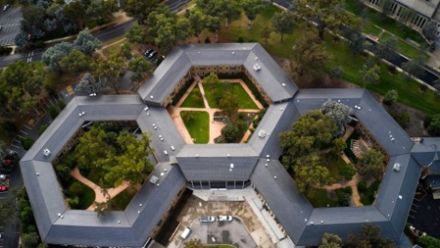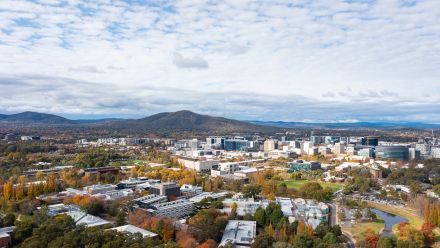Man vs wild
Local artist Roman Stachurski is searching for the balance between humankind and the environment. By ERIN SCHRIEBER.
When School of Art alumnus Roman Stachurski was in the second year of his undergraduate study, he envisioned a sculpture he would one day create.
"I had this idea, so I drew it down and then put it away in a folder for another day," he says.
It didn't quite fit with the themes he was exploring at the time, so he set it aside until he felt ready to bring the piece to life.
A few years later he returned to the concept for his third solo exhibition, Deductions. The envisioned sculpture is now a reality, and a recent addition to the ANU Art Collection.
Stachurski explains that both this particular work and the others in the exhibition reflect his concerns for the future of humanity, and the strain that industrialisation and modernisation have placed on the environment.
"The collection explores the relationships between mankind and nature, the impact that human industry has on nature, and the balance between all of these things," he says.
"The sculptures in this exhibition are really about capturing a point in time - an equilibrium or point of balance - between these stresses and how the strength of nature perseveres through these."
Stachurski's simple yet striking works are built from wood, glass and metal - materials with a special significance.
"Wood is a natural element and in many of the sculptures the wood is the element that is under stress.
"The glass vessels I've used are a human-made material, and so they represent us. They are a vessel that can carry water and a large part of our constitution is water. A lot of those glass vessels have a history behind them. Some were handed down through my family and some of them were just the most extraordinary, serendipitous finds.
"The metal is the industrially produced, manufactured element. The particular steel I used is called black steel, it's a really raw material that's very dirty and heavy, and so that is the element that puts the stress on the natural elements in a lot of those pieces."
He says while many other artists make artwork to process their own life events and emotions, his own work is inspired by many hours contemplating the future of Earth and humanity. He cites books by science fiction authors Frank Herbert and Orson Scott Card as a major influence on his work.
"A lot of my ideas and inspiration are drawn from the future and other people's dreams and imaginations.
"Their work is pretty far-fetched sci-fi but I just find it incredibly inspirational - there's a lot of foresight in those dreamed-up worlds."
Perhaps in a decade or two people will say the same about Stachurski's old sketches.
For more photos download the ANU Reporter app.
This article appeared in ANU Reporter magazine Autumn 2014. Subscribe for free now.


